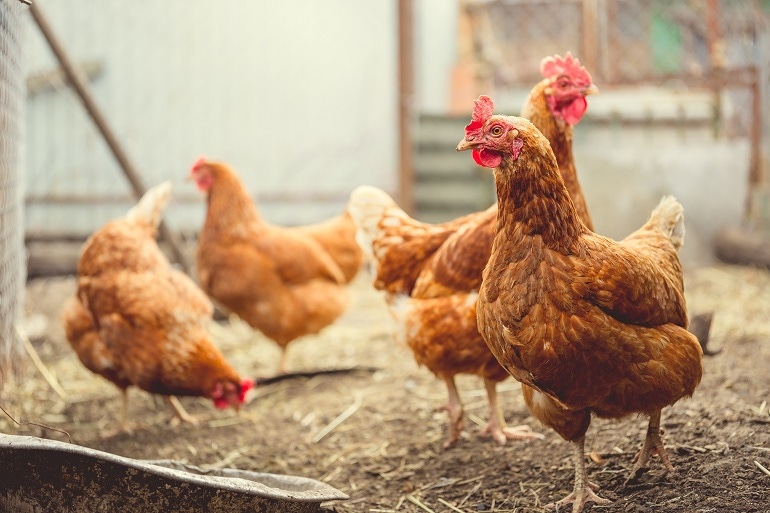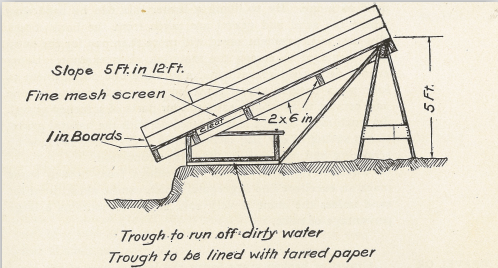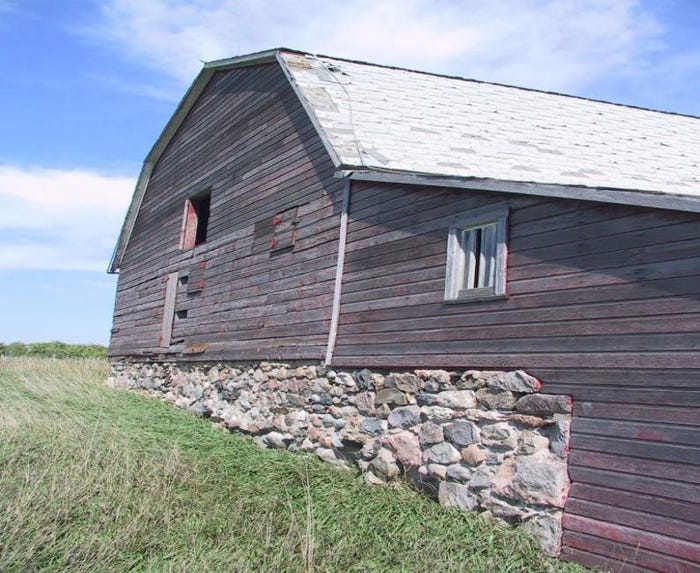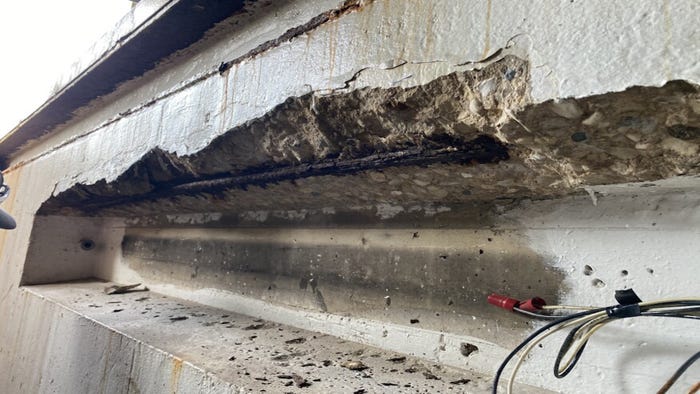Concrete on the Farm, 1900-1940: Part 2--Materials
In Part 2 of this series, concrete historian Luke Snell discuses the materials used by farmers in the early 1900s to make good concrete, including water, cement, and aggregates.

To make concrete you need only water, cement, and aggregates. On the farm, cement was the only manufactured material; water and aggregates could be found locally, and thus the cost could be low if the farmer selected good local materials. The many self-help books provided detailed instructions so the farmer could select the best materials to produce good quality concrete. Part 1 of this series discussed how to get quality sand. In part 2, we look at the other materials needed for good concrete.
Water
Water used to mix concrete must be clean—free from oils, alkali, and acids. This may sound complicated and that the farmer must test the water to insure it is suitable for making concrete. But most farms had a well or spring that was used for drinking water for their livestock and home and this water would be considered acceptable to make concrete.
When I attended a conference in Mongolia about how to make quality concrete, the engineers discussed how to ensure the quality of the water was acceptable for use in concrete. They presented several laboratory tests they thought were needed and asked what tests we require in the U.S. for making concrete. I told them our approach was simple: If you can drink it, you can use it to make concrete (the technical term is potable water). They laughed at the simplicity of this approach. But note that in cases where there is not a good source of potable water, there are laboratory tests that can determine if the available water can be used to make concrete.
Cement
Cement had to be purchased and was available to the farmer in paper or cloth bags or in barrels. One cement company recommended that the farmer buy cement in cloth bags since they could return the bags and get a rebate if they kept the bags dry and untorn. A bag would weigh 94 pounds and contain one cubic foot of cement. The size of the bag will prove to be significant when we look at how to make concrete in the next article. Most farmers would buy the cement in bags since this was easier to handle. A barrel of cement would contain 4 bags of cement and would be used on larger projects.
Today most cement is sold in bulk to batch plant and precast companies. It is blown into the cement silos by air thus it requires little manual labor to handle. For those of us that are doing small projects, cement is still available in paper bags at our local stores. This is a tiny piece of the market for the cement companies.
Once the cement was purchased, the farmer had to protect the cement bags from moisture. They were encouraged to store the cement in a watertight barns or sheds and on pallets that were at least 6 inches above the ground. They were warned that if the cement bags were stored in a damp place, the cement would become lumpy or a solid mass.
To make sure the cement was usable, the farmer was told to use the cement only if the lumps could crumble when hit with a shovel. If the lumps in the cement would not break up, the cement would be considered unusable and thrown out.

How to wash sand—from Concrete Construction about the Home and on the Farm, Atlas Portland Cement Co, 1909
Aggregates
Aggregate (gravel and sand) makes up about 70% of concrete and is the cheapest material (other than water) in the mix. The farmer had to consider that:
Aggregate must be clean (without silt and clay). The test to determine if the sand was clean enough to use was presented in part 1. If the aggregate needed to be cleaned, the farmer would build a washing trough.
Coarse aggregate must be small enough to fit into the slabs or walls. Normally aggregate used in the concrete would be no larger than 2 inches. Large pieces of aggregate could be thrown out when mixing the concrete. If there were several pieces of large aggregate, the farmer could screen it with a homemade sieve.
The farmer must be able to finish the concrete. Too much rock (coarse aggregates) will make the concrete difficult to finish and place.
The aggregates should not be soft or easily broken. The farmer was warned not to use soft sandstone, soft limestone, slate, or shale.
If the sand is very fine, the farmer was encouraged to double the amount of cement. A good sand would have particles from about 1/4 inch down to 1/100 of an inch. A fine sand would have few particles bigger than 1/8 inch.

Since cement was the most expensive material in concrete, many farmers looked for ways to reduce the amount of cement. One method used when placing a foundation was to look for large rocks. When placing the concrete, they would throw these rocks into the fresh concrete. These rocks were called plum or pudding stones and could weight up to 100 pounds. This would reduce the amount of concrete and thus the amount of cement needed. This concrete was called cyclopean concrete (See wall in photo above) named for the race of Cyclopes from Greek mythology that had a huge single eye in the center of their head.
Now that the farmer has determined the materials needed to make good concrete, he must put it all together and make the concrete. This is presented in Part 3.
About the Author(s)
You May Also Like




